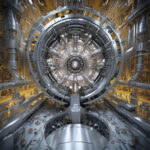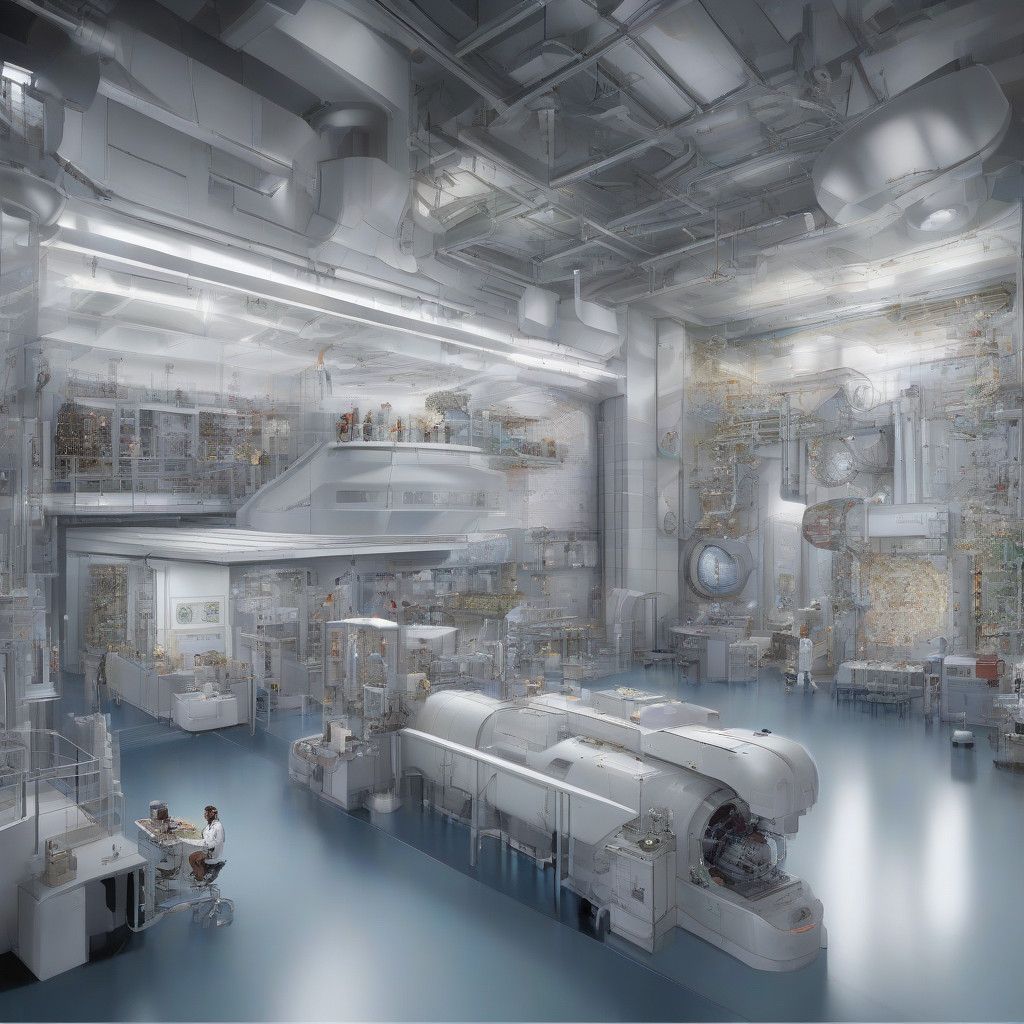Situated within the Orsay valley campus, the MOSAIC platform stands as a beacon of interdisciplinary research, facilitated by the leadership of IJCLab, which is part of the Université Paris-Saclay and supported by the National Centre for Scientific Research (CNRS). With a focus on scientific advancement across diverse fields such as materials science, nuclear astrophysics, and environmental sciences, MOSAIC is uniquely positioned to address pressing challenges in energy production and environmental sustainability.
The MOSAIC facility boasts an impressive array of ion beam tools, including the 4 MV Andromede Pelletron and the 2 MV ARAMIS electrostatic ion accelerator, alongside advanced techniques such as the 190 kV IRMA ion implanter and the 40 kV SIDONIE isotope separator. This multi-purpose complex enables researchers to perform a wide range of modifications on materials through ion beam implantation, irradiation, and synthesis, while also allowing for intricate structural and chemical analysis using state-of-the-art techniques like Rutherford Backscattering Spectrometry (RBS), Elastic Recoil Detection Analysis (ERDA), Particle Induced X-ray Emission (PIXE), and Particle Induced Gamma-ray Emission (PIGE).
One of the platform’s remarkable characteristics is its ability to produce Aunq+ nanoclusters and ion beams from nearly all elements of the periodic table, ranging from protons to bismuth. This capability is remarkable not only in terms of variety but also flexibility, accommodating sample temperatures from -170°C to 1000°C. Such versatility makes MOSAIC a sought-after venue for conducting high-level research in various sectors, including nuclear energy—both fusion and fission—as well as medical isotope production and advanced materials for electronics.
Additionally, MOSAIC’s in situ techniques for materials characterization are globally recognized. Techniques such as in situ RBS in Channelling geometry and in situ Transmission Electron Microscopy (TEM) with single and dual ion beam irradiation facilitate groundbreaking studies in materials science. Moreover, the exclusive qualities of the SIDONIE isotope separator allow for the production of high-purity isotopes—an essential aspect for many applications, including medical diagnostics.
With more than 40 years of established operation, MOSAIC has become a hub for collaboration, embracing both academic researchers and industrial users from various global institutions. The facility supports students engaged in Master studies through internships and lab work, fostering the next generation of scientists and engineers critical to advancing interdisciplinary research.
The establishment of the MOSAIC facility is underscored by significant investments, such as the acquisition of the Andromede NEC Pelletron accelerator, funded by Equipex government initiatives from 2011 to 2020. The facility keeps up with the constant progression of science and technology through ongoing upgrades to its infrastructure and equipment. For instance, the longstanding SIDONIE isotope separator is currently undergoing modernization to enhance its capabilities.
The MOSAIC platform is also integrated into broader scientific collaborations, such as the JANNuS Scientific Interest Group, uniting facilities dedicated to materials analysis and molecular irradiation across multiple sites in France. This collaboration allows for the pooling of resources and expertise, culminating in the EMIR&A network of accelerators, which enables rigorous experimentation across diverse materials and molecular structures.
Moreover, MOSAIC’s connection with the JANNuS facilities facilitates unique experimental methodologies that focus on in situ investigations. Proposals for beam time are available through the EMIR&A network, thus enhancing accessibility for researchers worldwide. Such cooperative frameworks amplify the impact of the research conducted at MOSAIC, ensuring that results are disseminated and utilized across academic and industrial landscapes.
Innovative projects aimed at extending MOSAIC’s capabilities are on the horizon. The reinstallation of the 30 kV Tancrede test bench, designed for intense beams of multi-charged atomic ions, exemplifies MOSAIC’s commitment to remaining at the forefront of technological advancements. This upgrade is expected to introduce ion manipulation and trapping techniques, further enhancing the facility’s research potential.
Additionally, the introduction of a new ion beam line at the ARAMIS accelerator, coupled with a high-performance X-ray diffractometer, marks another significant step in maintaining the state-of-the-art status of the facility. Such advancements will support in situ structural characterizations under varying ion irradiation conditions, a capability that is unparalleled globally, specifically concerning the behavior of materials under irradiation.
Through its extensive research programs and collaborations, MOSAIC is positioned to provide critical insights into the behavior of materials under various conditions, particularly for nuclear materials. As global energy demands shift towards more sustainable and safer options, the work facilitated by the MOSAIC platform holds considerable implications for future technologies in nuclear energy, medical applications, and beyond.
In summary, the MOSAIC platform not only symbolizes an important nexus for interdisciplinary research but also serves as a model for how collaborative efforts can lead to meaningful advancements in science and technology. The commitment to continuous improvement and exploration ensures that MOSAIC will remain pivotal in addressing some of the most significant challenges facing society today.












